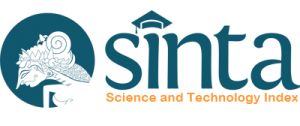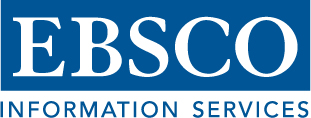Model Pelatihan Berbasis Produk Untuk Meningkatkan Kinerja Penelitian dan Publikasi Karya Ilmiah
Abstract
This paper aims to develop a product-based training model to improve the performance of research, and publication of scientific work. This research was carried out with R & D covering two stages. In the preliminary study phase, a literature review and field survey were conducted on the training models used so far. At the development stage, drafting the model, validation carried out expertand limited field testing were. Data analysis techniques using thedifferent test techniques Mann-Whitney U test. The R & D results show findings: 1) the training model is carried out through analysis, planning, development, implementation, and evaluation; 2) the validity level of the model is in the good category; and 3) the products produced by lecturers, namely the results of research and publication are higher than before using the model.
Keywords
Full Text:
PDF (Indonesian)References
Blondy, Laurie C. “Evaluation and Application of Andragogical Assumptions to the Adult Online Learning Environment.” Journal of Interactive Online Learning 6, no. 2 (2007): 116-130.
Borg, W. R. & M. D. Gall. Educational research: An introduction (5th ed.).White Plains, NY: Longman, 1989.
Branch Robert Maribe, Instructional Design: The ADDIE Approach (NewYork: Springer, 2009), 1.
Budiyono, B. “The Implementation of Continuing Professional Development of Economics Teachers at State Senior High Schools in Semarang: Investigating the Constraints and Challenges.” Dinamika Pendidikan 11, no. 1 (2016): 74-83.
Castetter, William B., I. Phillip Young, The Human Resource Function in Educational Administration, (7th Edition). Englewood Cliffs, New Jersey: Prentice Hall, Inc., 2000.
Day, C. J. Sachs, Professionalism, Performativity and Empowerment: Discourses in the Politics, Policies and Purposes of Continuing Professional Development. Maidenhead: Open University Press, 2004.
Dikti. Buku Penjaminan Mutu Pendidikan Tinggi. Jakarta: Dikti, 2003.
Dumaria, Febriana. “Hubungan Akreditasi dengan Mutu Lulusan,” Jurnal Administrasi Kebijakan Kesehatan 1, no. 1 (Agustus 2006): 26-32.
Hasibuan, Malayu S. P. Manajemen Sumber Daya Manusia. Jakarta: Bumi Aksara, 2016.
Marwansyah, Manajemen Sumber Daya Manusia. Bandung: Alfabeta, 2010.
“Muramnya Wajah Dunia Riset Indonesia.” https://tirto.id/muramnya-wajah-dunia-riset-indonesia-bsF6.
Rahmawaty, Ike Kusdian. Manajemen Sumber Daya Manusia. Yogyakarta: Penerbit ANDI, 2010.
Sagala, H. S. Administrasi Pendidikan Kontemporer. Bandung: Alfabeta, 2000.
Stronge, James H. et al. Qualities of Effective Principals. USA: Association for Supervision and Curriculum Development, 2008.
Sukmadinata. Metode Penelitian Pendidikan. Bandung: Remaja Rosdakarya, 2011.
Suparman, M. Atwi. Desain Instruksional Modern Desain Instruksional Modern: Pegangan Pemimpin dan Inovator Pendidikan. Jakarta: Erlangga, 2012.
Trisnaningsih, Sri. “Faktor-faktor yang Mempengaruhi Kinerja Dosen Akuntansi.” Jurnal Akuntansi dan Auditing 8, no. 1 (2011): 83-94.
Tuominen, Kari. Managing Change: Practical Strategies for Competitive Advantage. ASQ: Quality Press, 2000.
Undang-undang Guru dan Dosen RI Nomor 14 Tahun 2005, pada bab I, pasal 1 ayat 4.
Wijatno, Serian. Pengelolaan Perguruan Tinggi Secara Efisien, Efektif, dan Eknomis: Untuk Meningkatkan Mutu penyelenggaraan Pendidikan dan Mutu Lulusan. Jakarta: Salemba Empat, 2009.
DOI: http://dx.doi.org/10.25278/jj71.v17i1.291
viewed = 0 times



















